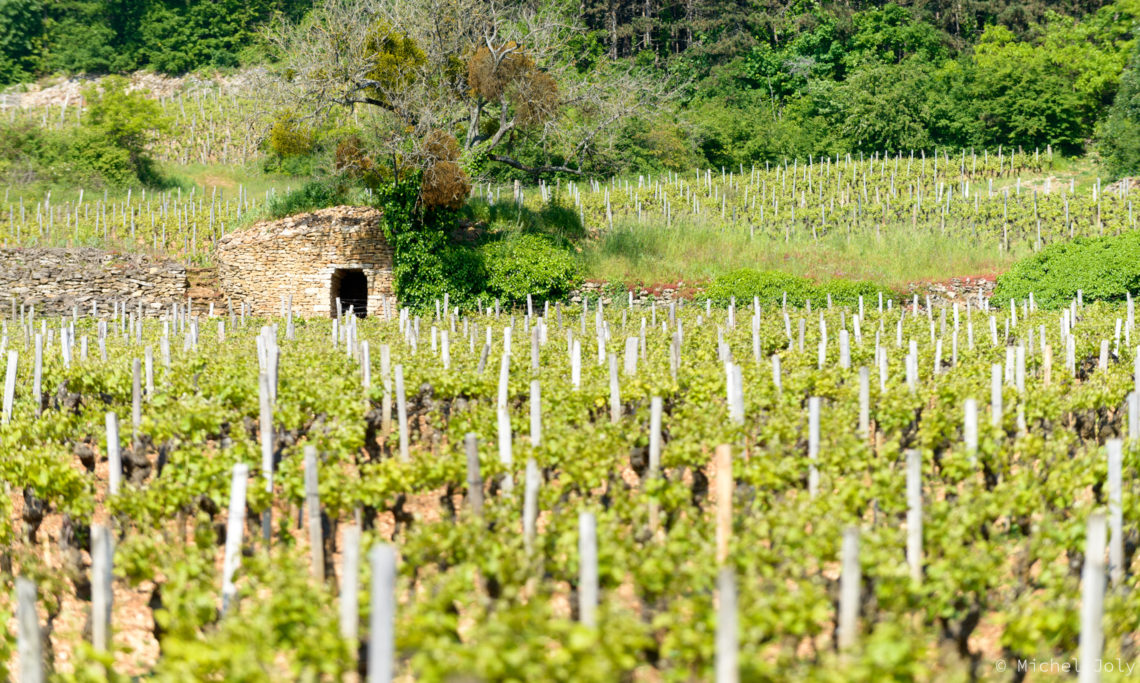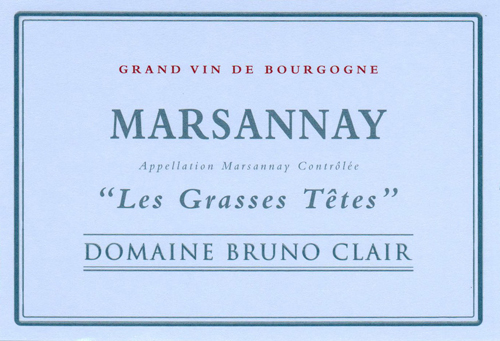Marsannay Les Grasses Têtes
At a Glance
- Size: 2.27 ha (5.60 ac)
- Variety: Pinot Noir
- Vine Age: Planted in 1950, 1970, 1973, and 1990
- Terroir: On the slope above Marsannay, southeast-facing, 300m average altitude, rich clay soil with limestone rock deposits.
- Viticulture: Sustainable, organic practices
- Vinification: 30-50% whole cluster, ambient yeast fermentation in open wood vats with punch-downs. Aged 18-20 months in barrels (approx. 40% new). Short blending period in tank before bottling.
Additional Info
Etymology: lit. “Fat heads,” which refers to large outcroppings of bedrock. In French, the top of the bedrock is called the head.
Source: The Climats and Lieux-Dits of the Great Vineyards of Burgundy, Marie-Hélène Landrieu-Lussigny.
Site: Les Grasses Têtes is 8 hectares (19.8 acres). It stretches from the houses in the village all the way to the top of the slope, at 280 to 335-meters elevation. The slope is moderate, with a gradient of 10%. It faces east.
Soil: The soils of Les Grasses Têtes are constituted of dark red, iron-rich, water-retentive, heavy clay. They contain 20-25% angular gravel and small cobble that come from the nearby bedrock. There is a 15 cm deep topsoil horizon. Then, there is a 1 to 1.5-meter layer of soil mixed with huge boulders and laves originating from the bedrock (the “fat heads”).
Geology: The majority of the vineyard sits on the fossiliferous crinoidal limestone. However, Francoise Vannier has identified at least 4 distinct faults that cut across this vineyard. The upper portion of the vineyard sits on white oolite, and the lowest portion of the vineyard sits on Comblanchien limestone. Two faults that cut across the middle of the vineyard also reveal thin slivers of Ostrea acuminata marl.
Clair parcels: Bruno has multiple parcels scattered across the vineyard, totaling 2.02 hectares (5 acres). The vines were planted between 1969 and 1973.
The Wine: Grasses-Têtes is the most powerful of the Clair Marsannay lieux-dits, in both fruit and structure.
With many thanks to geologist Brenna Quigley for putting the physical and geologic aspects of these vineyards into words far more meaningful than we could have written on our own. https://www.brennaquigley.com
We are also greatly indebted to geologist Françoise Vannier of Adama Terroirs Viticoles who created the soil and bedrock maps for Fixin that Brenna based part her work on. www.adama-terroirs.fr
Wines
-
White
-
Rosé
-
Red
- Aloxe-Corton
- Chambolle-Musigny Les Véroilles
- Chambolle-Musigny 1er Cru Les Charmes
- Fixin Champs Perdrix
- Gevrey-Chambertin
- Gevrey-Chambertin 1er Cru Clos du Fonteny Monopole
- Gevrey-Chambertin 1er Cru Petite Chapelle
- Gevrey-Chambertin 1er Cru Les Cazetiers
- Gevrey-Chambertin 1er Cru Clos Saint-Jacques
- Marsannay Rouge
- Marsannay Les Vaudenelles
- Marsannay La Charme Aux Prêtres
- Marsannay Les Grasses Têtes
- Marsannay Les Longeroies
- Morey-Saint-Denis En La Rue De Vergy
- Savigny-les-Beaune 1er Cru Les Jarrons
- Savigny-les-Beaune 1er Cru La Dominode
- Vosne-Romanée Les Champs Perdrix
- Vosne-Romanée 1er Cru Aux Raignots
- Bonnes-Mares Grand Cru
- Chambertin Clos de Bèze Grand Cru


